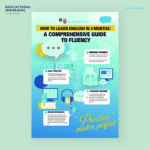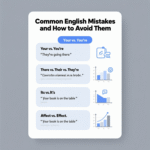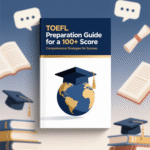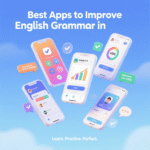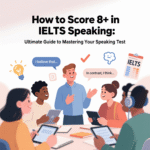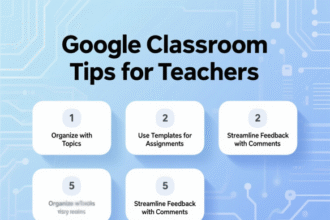The integration of artificial intelligence (AI) into education is revolutionizing how knowledge is delivered, acquired, and assessed. From personalized learning experiences to automating administrative tasks, AI is reshaping the educational landscape, making it more accessible, efficient, and tailored to individual needs. We explore the profound ways artificial intelligence is transforming education, delving into its applications, benefits, challenges, and future potential.
- The Rise of AI in Education
- AI-Powered Personalized Learning
- AI in Classroom Management
- Enhancing Accessibility with AI
- AI in Teacher Training and Support
- AI and Student Assessment
- AI in Career and College Readiness
- Ethical Considerations in AI Education
- The Future of AI in Education
- Challenges of Implementing AI in Education
- Real-World Examples of AI in Education
- Recommendations for Implementing AI in Education
- FAQs About AI in Education
The Rise of AI in Education
Artificial intelligence has emerged as a transformative force across industries, and education is no exception. With advancements in machine learning, natural language processing, and data analytics, AI is enabling educators and institutions to rethink traditional models. We are witnessing a shift from one-size-fits-all approaches to dynamic, adaptive systems that cater to diverse learning styles.
AI’s role in education extends beyond the classroom. It empowers administrators, supports teachers, and enhances student outcomes. By analyzing vast amounts of data, AI identifies patterns, predicts needs, and provides actionable insights. This capability is driving a new era of innovation in education, where technology aligns with human potential to create meaningful learning experiences.
Why AI Matters in Education
The global education sector faces challenges such as overcrowded classrooms, limited resources, and varying student abilities. AI addresses these issues by offering scalable solutions that improve efficiency and equity. We see AI as a tool to bridge gaps in access, personalize learning, and prepare students for a technology-driven future.
-
Scalability: AI systems can support millions of learners simultaneously, making education accessible in remote or underserved areas.
-
Personalization: AI tailors content to individual student needs, enhancing engagement and retention.
-
Efficiency: Automation of repetitive tasks frees educators to focus on teaching and mentoring.
-
Data-Driven Insights: AI analytics provide real-time feedback, enabling proactive interventions.
AI-Powered Personalized Learning
One of the most significant ways artificial intelligence is transforming education is through personalized learning. Traditional classrooms often rely on standardized curricula, which may not suit every learner. AI changes this by adapting content to individual strengths, weaknesses, and preferences.
Adaptive Learning Platforms
Adaptive learning platforms use AI algorithms to assess a student’s knowledge level and learning pace. These systems adjust the difficulty of tasks, recommend resources, and provide targeted feedback. For example, platforms like Smart Sparrow or DreamBox analyze student responses in real time, modifying lessons to ensure mastery of concepts.
-
Real-Time Adjustments: AI detects when a student struggles and offers simpler explanations or additional practice.
-
Customized Pathways: Students progress through material at their own pace, reducing frustration and boredom.
-
Engagement: Interactive elements, such as gamified quizzes, keep learners motivated.
Case Study: AI in Math Education
Consider a middle school student struggling with algebra. An AI-powered platform like Khan Academy’s adaptive exercises identifies specific areas of difficulty, such as solving linear equations. The system provides tailored video tutorials, practice problems, and hints. Over time, it tracks progress, ensuring the student builds confidence and competence. This personalized approach contrasts with traditional methods, where teachers may lack the time to address individual needs in a large class.
Benefits of Personalized Learning
-
Improved Outcomes: Studies show personalized learning increases test scores by up to 20% in subjects like math and science.
-
Student Engagement: Tailored content aligns with interests, reducing dropout rates.
-
Accessibility: AI platforms are available 24/7, supporting students outside traditional school hours.
AI in Classroom Management
Beyond personalization, AI streamlines classroom management, allowing educators to focus on teaching. From grading assignments to monitoring student behavior, AI tools reduce administrative burdens.
Automated Grading Systems
AI-driven grading systems, such as Gradescope, use machine learning to evaluate assignments and exams. These tools recognize patterns in student responses, providing consistent and unbiased grading. For open-ended questions, natural language processing (NLP) analyzes written answers, offering detailed feedback.
-
Time Savings: Teachers save hours weekly on grading, enabling more time for lesson planning.
-
Consistency: AI eliminates human bias, ensuring fair evaluation.
-
Scalability: Automated systems handle large volumes of assessments, ideal for massive open online courses (MOOCs).
Virtual Classroom Assistants
AI-powered virtual assistants, like Google’s TeachAid or Microsoft’s Classroom Insights, monitor student participation and engagement. These tools analyze attendance, discussion contributions, and even facial expressions (with consent) to gauge student mood and involvement.
-
Proactive Interventions: AI alerts teachers to disengaged students, enabling timely support.
-
Data Insights: Analytics highlight trends, such as declining participation, for early intervention.
-
Multilingual Support: AI assistants translate instructions for diverse classrooms, fostering inclusivity.
Enhancing Accessibility with AI
Artificial intelligence is transforming education by making it more accessible to diverse populations. AI tools break down barriers for students with disabilities, non-native speakers, and those in remote areas.
AI for Students with Disabilities
AI technologies, such as text-to-speech and speech-to-text, empower students with visual or hearing impairments. Tools like Microsoft’s Immersive Reader use AI to read text aloud, highlight words, and provide translations, making content accessible to all.
-
Real-Time Captioning: AI generates live captions for lectures, benefiting deaf or hard-of-hearing students.
-
Visual Aids: Image recognition describes visuals for visually impaired learners.
-
Customized Interfaces: AI adjusts font sizes, colors, and layouts for students with dyslexia or other needs.
Bridging Language Barriers
For non-native speakers, AI translation tools like DeepL or Google Translate provide real-time language support. These systems enable students to learn in their native language while gradually mastering the instructional language.
-
Multilingual Content: AI generates translated textbooks and resources.
-
Cultural Relevance: NLP ensures translations are culturally appropriate.
-
Language Practice: AI chatbots simulate conversations, helping students improve language skills.
Reaching Remote Learners
AI-powered platforms like Coursera and edX deliver high-quality education to remote regions. These platforms use AI to recommend courses, track progress, and provide certifications, making education accessible regardless of location.
-
Offline Access: AI optimizes content for low-bandwidth environments.
-
Localized Content: AI adapts materials to regional curricula and languages.
-
Cost-Effective: Free or low-cost platforms democratize access to education.
AI in Teacher Training and Support
Educators are at the heart of the learning process, and AI enhances their capabilities. From professional development to real-time classroom support, AI empowers teachers to excel.
AI-Driven Professional Development
AI platforms like Edthena analyze classroom recordings, providing teachers with feedback on their teaching methods. These tools use NLP to evaluate communication styles and suggest improvements.
-
Personalized Coaching: AI identifies areas for growth, such as classroom management techniques.
-
Peer Learning: AI connects teachers with similar challenges for collaborative learning.
-
Continuous Learning: Online modules offer flexible training opportunities.
Real-Time Classroom Support
AI assistants provide real-time suggestions during lessons. For example, IBM’s Watson Education offers prompts for engaging activities or alternative explanations when students struggle.
-
Dynamic Lesson Planning: AI suggests resources based on student performance.
-
Behavioral Insights: AI monitors classroom dynamics, recommending strategies to maintain focus.
-
Content Creation: AI generates quizzes, worksheets, and presentations tailored to lesson objectives.
AI and Student Assessment
Assessment is a critical component of education, and AI is revolutionizing how we evaluate student progress. Traditional tests often fail to capture a student’s full potential, but AI offers more nuanced approaches.
Formative Assessments
AI enables continuous, formative assessments that track student progress in real time. Tools like Quizlet use AI to create adaptive quizzes that adjust difficulty based on responses.
-
Immediate Feedback: Students receive instant insights into their performance.
-
Skill Mapping: AI identifies strengths and weaknesses across subjects.
-
Predictive Analytics: AI forecasts potential challenges, allowing preemptive support.
Competency-Based Evaluations
AI supports competency-based education, where students progress by demonstrating mastery rather than completing a set curriculum. Platforms like MasteryConnect use AI to track competencies and provide detailed reports.
-
Holistic Evaluation: AI assesses skills beyond academics, such as critical thinking and collaboration.
-
Individualized Goals: Students work toward personalized milestones.
-
Transparent Progress: Parents and teachers access detailed performance dashboards.
AI in Career and College Readiness
Preparing students for future careers is a core goal of education. AI equips learners with the skills and knowledge needed in a rapidly changing job market.
Career Path Recommendations
AI platforms like Naviance analyze student interests, skills, and academic performance to suggest career paths. These tools use predictive algorithms to align recommendations with market trends.
-
Personalized Guidance: AI matches students with careers based on their unique profiles.
-
Skill Development: AI recommends courses to build in-demand skills, such as coding or data analysis.
-
Job Market Insights: AI provides data on emerging industries, helping students plan ahead.
College Application Support
AI streamlines the college application process by offering personalized guidance. Tools like CollegeVine use AI to recommend colleges, review essays, and prepare students for interviews.
-
Essay Analysis: AI provides feedback on application essays, improving clarity and impact.
-
Scholarship Matching: AI identifies funding opportunities based on student profiles.
-
Interview Prep: AI simulates interviews, offering tips on communication and confidence.
Ethical Considerations in AI Education
While artificial intelligence is transforming education, it raises ethical questions that must be addressed. We must ensure AI is used responsibly to promote equity and protect privacy.
Data Privacy and Security
AI systems rely on vast amounts of student data, raising concerns about privacy. Institutions must implement robust safeguards to protect sensitive information.
-
Encryption: AI platforms use end-to-end encryption to secure data.
-
Consent: Students and parents must provide explicit consent for data collection.
-
Transparency: Institutions should disclose how data is used and stored.
Addressing Bias in AI
AI algorithms can inadvertently perpetuate biases present in their training data. For example, an AI grading system trained on biased datasets may unfairly evaluate certain groups.
-
Diverse Datasets: AI developers must use inclusive data to train models.
-
Regular Audits: Institutions should audit AI systems for bias and accuracy.
-
Human Oversight: Educators must review AI outputs to ensure fairness.
Ensuring Equity
AI has the potential to reduce educational disparities, but it must be implemented thoughtfully to avoid widening gaps. For example, not all schools have access to AI infrastructure.
-
Affordable Solutions: Developers should create cost-effective AI tools for underfunded schools.
-
Training Programs: Teachers need training to integrate AI effectively.
-
Universal Access: Governments and organizations must invest in AI infrastructure for all.
The Future of AI in Education
The potential of artificial intelligence is transforming education is vast, and we are only scratching the surface. Emerging technologies like generative AI, virtual reality (VR), and augmented reality (AR) will further enhance learning experiences.
Generative AI in Content Creation
Generative AI, such as language models, can create customized educational content. For example, AI can generate interactive stories, simulations, or practice problems tailored to student interests.
-
Dynamic Textbooks: AI creates adaptive textbooks that evolve with student progress.
-
Creative Projects: AI assists students in writing, art, and music projects.
-
Language Learning: AI generates immersive language exercises, simulating real-world scenarios.
AI and Immersive Learning
VR and AR, powered by AI, create immersive learning environments. For example, Google Expeditions uses AI to guide students through virtual field trips, such as exploring ancient ruins or the human body.
-
Hands-On Learning: AI simulates labs for science experiments, reducing costs.
-
Global Collaboration: Students connect with peers worldwide in virtual classrooms.
-
Engagement: Immersive experiences make abstract concepts tangible.
Lifelong Learning with AI
As the job market evolves, lifelong learning becomes essential. AI supports continuous education by offering flexible, self-paced learning opportunities.
-
Micro-Credentials: AI platforms offer certifications for specific skills, such as AI programming.
-
Career Upskilling: AI recommends courses to stay competitive in the workforce.
-
Personalized Learning Paths: AI creates lifelong learning plans based on career goals.
Challenges of Implementing AI in Education
Despite its promise, integrating AI into education faces hurdles. We must address these challenges to ensure AI’s benefits are fully realized.
Cost and Infrastructure
AI implementation requires significant investment in hardware, software, and training. Many schools, especially in developing regions, lack the necessary resources.
-
Funding Solutions: Governments and private sectors should subsidize AI adoption.
-
Cloud-Based AI: Cloud platforms reduce the need for expensive hardware.
-
Open-Source Tools: Free AI tools can lower barriers to entry.
Teacher Resistance
Some educators may resist AI, fearing it will replace their roles. However, AI is a tool to enhance, not replace, human teaching.
-
Professional Development: Training programs can ease concerns and build confidence.
-
Collaboration: AI should be positioned as a partner, not a competitor.
-
Showcasing Benefits: Demonstrating time savings and improved outcomes can encourage adoption.
Digital Divide
The digital divide remains a significant barrier. Students without access to devices or reliable internet cannot benefit from AI tools.
-
Device Distribution: Schools should provide laptops or tablets to students.
-
Offline Solutions: AI platforms should offer offline capabilities.
-
Community Centers: Local hubs can provide access to AI tools.
Real-World Examples of AI in Education
To illustrate AI’s impact, we examine real-world applications across different educational contexts.
Duolingo: Language Learning
Duolingo uses AI to personalize language lessons, adapting to user progress and mistakes. Its chatbot feature simulates conversations, improving fluency.
-
Adaptive Exercises: AI adjusts difficulty based on user performance.
-
Gamification: Points and streaks motivate learners.
-
Global Reach: Available in over 40 languages, supporting millions worldwide.
Georgia Tech’s AI Teaching Assistant
In 2016, Georgia Tech introduced Jill Watson, an AI teaching assistant powered by IBM Watson. Jill answered student queries, freeing professors for higher-level tasks.
-
24/7 Support: Students received instant responses to common questions.
-
Scalability: Jill handled thousands of queries in large online courses.
-
Human-Like Interaction: Students often didn’t realize Jill was AI.
Smart Tutoring in China
China’s Squirrel AI provides personalized tutoring to millions of students. Its adaptive system diagnoses knowledge gaps and creates tailored learning plans.
-
Scalability: Supports millions of students across diverse regions.
-
Affordability: Offers cost-effective tutoring compared to human tutors.
-
Results: Improved student scores by up to 30% in some subjects.
Recommendations for Implementing AI in Education
To maximize the benefits of AI, we recommend the following strategies for educators, institutions, and policymakers:
-
Invest in Infrastructure: Ensure schools have the hardware and connectivity needed for AI tools.
-
Prioritize Training: Provide ongoing professional development for teachers to use AI effectively.
-
Focus on Equity: Distribute AI resources to underserved communities to bridge gaps.
-
Monitor Ethics: Establish guidelines for data privacy, bias prevention, and transparency.
-
Encourage Collaboration: Foster partnerships between schools, tech companies, and governments.
-
Pilot Programs: Test AI tools in small-scale projects before full implementation.
-
Engage Stakeholders: Involve parents, students, and teachers in AI adoption decisions.
FAQs About AI in Education
-
What is AI in education?
AI in education refers to the use of artificial intelligence technologies to enhance teaching, learning, and administrative processes. -
How does AI personalize learning?
AI analyzes student data to tailor content, adjust difficulty, and provide targeted feedback. -
Can AI replace teachers?
No, AI supports teachers by automating tasks and providing insights, allowing them to focus on mentoring. -
Is AI education accessible to all?
While AI has the potential to be inclusive, the digital divide limits access for some students. -
How does AI improve grading?
AI automates grading, reduces bias, and provides consistent, detailed feedback. -
What are the ethical concerns of AI in education?
Key concerns include data privacy, algorithmic bias, and equitable access. -
How does AI support students with disabilities?
AI offers tools like text-to-speech, real-time captioning, and customized interfaces. -
Can AI help with career planning?
Yes, AI recommends career paths and skills based on student interests and market trends. -
What is an adaptive learning platform?
An adaptive platform uses AI to adjust content and pace to individual student needs. -
How does AI enhance teacher training?
AI provides personalized feedback and connects teachers with professional development resources. -
Is AI education cost-effective?
AI can reduce costs by automating tasks and scaling education to large populations. -
How does AI address language barriers?
AI translation tools provide multilingual support and culturally relevant content. -
What is the role of AI in assessments?
AI enables continuous, formative assessments and competency-based evaluations. -
How can schools implement AI ethically?
Schools should prioritize data privacy, audit for bias, and ensure equitable access. -
What is the future of AI in education?
The future includes generative AI, immersive learning, and lifelong learning opportunities.






